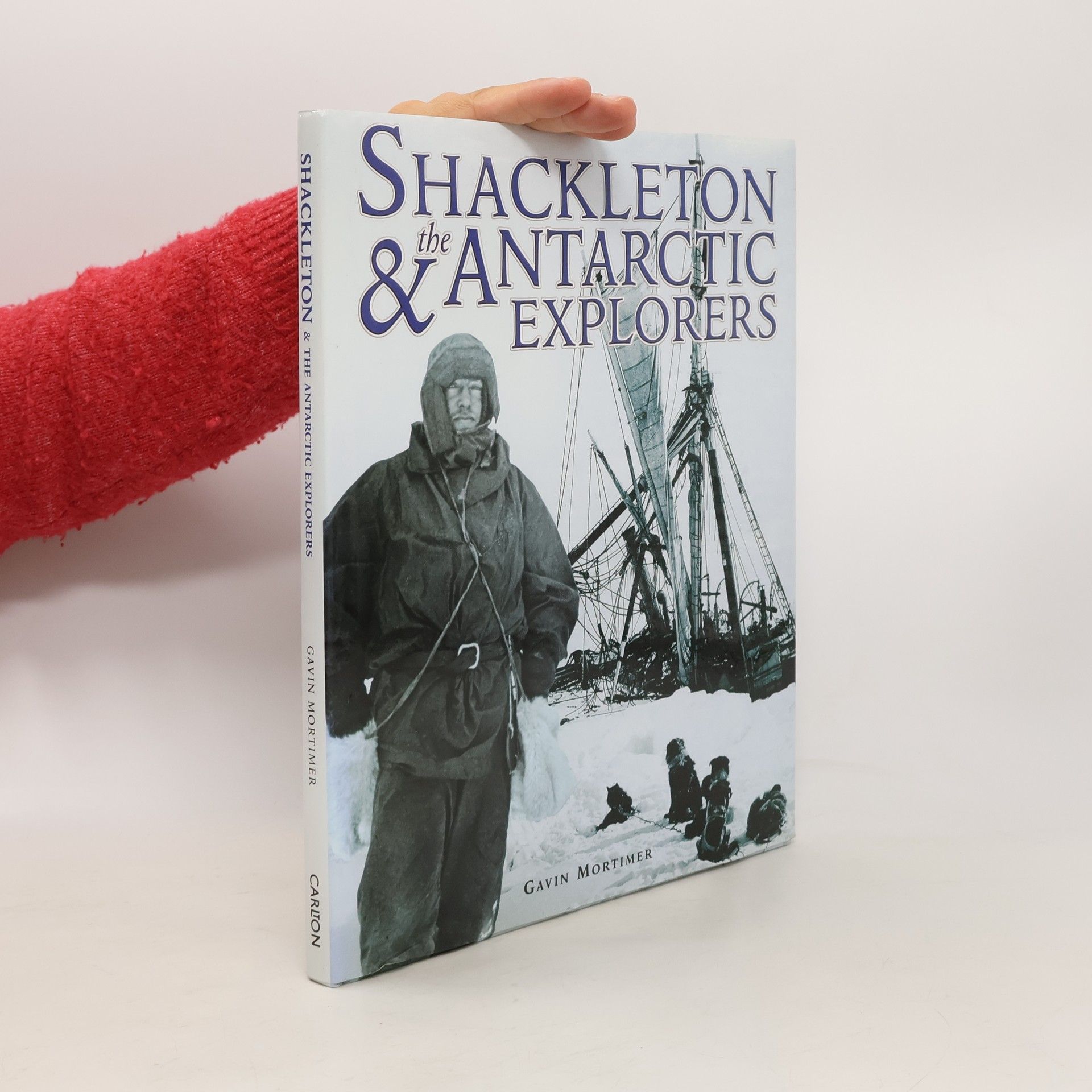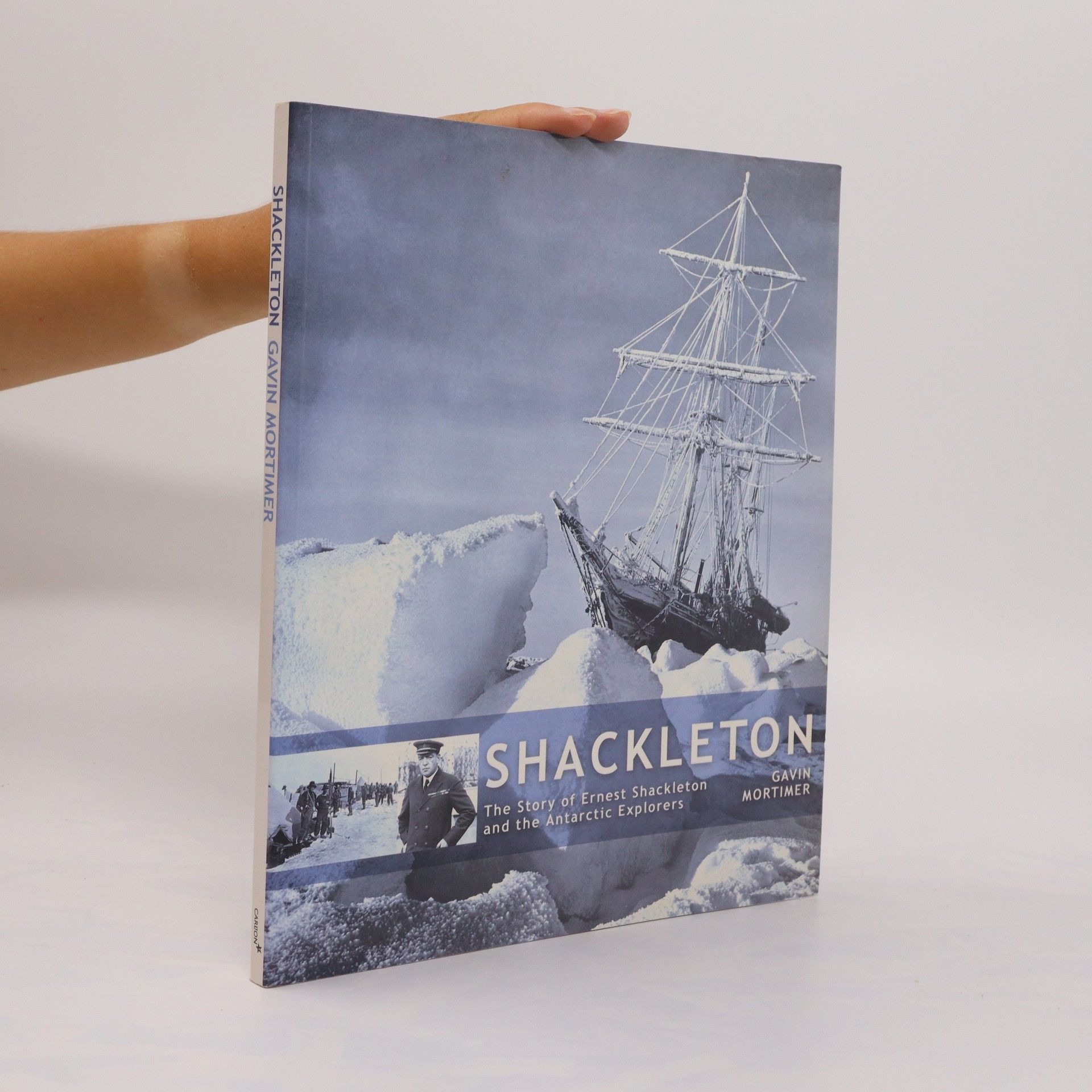Shackleton
- 128bladzijden
- 5 uur lezen
The story of Ernest Shackleton, A British explorer who with 28 men attempted to cross the continent aboard his ship the Endurance in 1914 is a story of survival against all odds.
Voor een gedetailleerde biografie, om meer te weten te komen over alle boeken die ik heb geschreven en om mijn toekomstige projecten te ontdekken, kunt u mijn website bezoeken via de bovenstaande link.






The story of Ernest Shackleton, A British explorer who with 28 men attempted to cross the continent aboard his ship the Endurance in 1914 is a story of survival against all odds.
"A history of the Special Air Service's lightweight, heavily armed vehicles and their combat use, ranging from the famous 1942 airfield raids of North Africa, the SAS Brigade's jeep-borne operations in Europe after D-Day, and 22 SAS's postwar adoption of much-modified Land Rovers for desert operations. The SAS, the world's most famous special operations unit, made its name in the desert of North Africa, shooting up Axis airfields from specially modified Willys jeeps. Following the start of the El Alamein offensive in October 1942, the SAS used jeeps effectively in reconnoitring and ambushing the retreating Afrika Korps. After the conclusion of the North African campaign, the Willys underwent several small but significant changes, including the introduction of the .303 Browning machine gun. Between June and October 1944, the SAS brigade operated deep inside Occupied France, harassing Germans reinforcements heading to Normandy, calling up air strikes on installations, and carrying out reconnaissance missions - all made possible with jeeps dropped by the RAF. Jeeps were also used in the push into Germany in the spring of 1945. Transported across the Rhine in "Buffalo" amphibious landing craft, they formed part of the vanguard of the Allied advance, and their agility, speed, and firepower proved crucial in crushing fanatical pockets of Nazi resistance."--Amazon.ca
"The Long Range Desert Group was one of the most famous special units of World War II, operating heavily modified vehicles deep behind enemy lines to gather intelligence and support the raids of David Stirling's new Special Air Service. When war broke out, a pre-war explorer and army officer, Ralph Bagnold, convinced Middle East Command of the need for a reconnaissance force to penetrate into Italian-held desert. Bagnold tested four types of vehicles over rocks and through soft sand to find the best one for his new unit. Bagnold selected the Chevrolet WB (30 CWT) as the signature vehicle of the Long Range Desert Group because it is "fast, simple and easy to handle". With left-hand steering, horizontal grill and round fenders on the rear wheels, these trucks proved themselves popular and effective. The durability of the Chevrolets was demonstrated in January 1941 with an audacious raid on the Italian fort/air strip at Murzuk, hundreds of miles behind enemy lines. This book explains the detail of all the vehicles of the LRDG, as well as their modifications, driving techniques, and special kit for surviving behind enemy lines in one of the most hostile environments on earth."
The biography of David Stirling, founder of the SAS
"Z Special Unit, one of the most intrepid but arguably the most unsung of Allied Special Forces of the Second World War waged a guerrilla war against Japan for two years in the south-west Pacific. On some of their 81 operations Z Special Unit slipped into enemy harbors in canoes and silently mined ships before vanishing into the night; on others they parachuted into the dense Borneo jungle to fight with headhunters against the Japanese and on one occasion they landed on an Indonesian island and smuggled out the pro-Allied sultan from under Japanese noses. The Japanese weren't the only adversary that Z Special Unit encountered in the brutal terrain of the Pacific. In the mango swamps of Borneo and the dense jungle of Papua New Guinea they were faced with venomous snakes, man-eating crocodiles, and deadly diseases. But it was the enemy soldiers who proved the most ruthless foe, beheading those Z Special Unit commandos who fell into their hands. "Z was a different operation to anything else," recalls veteran Jack Tredrea. "You were never told what you were going to do. You weren't allowed to talk about what you were training for in case any of us were caught. You could have been tortured and divulged information." Drawing on veteran interviews as well as operational reports and recently declassified SOE files, Gavin Mortimer explores the incredible history of this remarkable special forces unit and the band of commandoes that defied the odds." --Amazon.com
The Men who Battled to Reach the South Pole
The story of Ernest Shackleton, A British explorer who with 28 men attempted to cross the continent aboard his ship the Endurance in 1914 is a story of survival against all odds.
On the night of 10-11 May 1941, the Blitz reached its terrifying peak in the skies over London. Over 500 aircraft and thousands of Luftwaffe aircrew took off for England, laden with hundreds of tonnes of bombs to drop indiscriminately on the capital’s civilians. In a matter of hours, 1,486 Londoners were killed, 11,000 houses were destroyed, and millions of lives were changed for ever.This attack almost brought Britain to military collapse. Using extensive survivors' testimony and hitherto classified documents, The Longest Night reveals how the Luftwaffe came within a whisker of total victory.In a gripping, minute-by-minute account, Gavin Mortimer has recreated the experience of Londoners on this one terrifying night when the survival of the country hung in the balance.
Focusing on the daring missions of the SAS in Sicily and Italy during 1943, this volume highlights the regiment's diverse operations, from parachute insertions to beach assaults. Gavin Mortimer provides a detailed narrative enriched by first-hand accounts from SAS veterans, personal papers, and photographs, bringing the historical events to life. The book captures the courage and determination of SAS legends like Paddy Mayne and Roy Farran, allowing readers to explore the legacy of these remarkable operations against the backdrop of World War II.
A timely exploration of the twelve best qualities of the wartime generation - and how we can use these to improve our individual character and collective response in the face of crisis.
A fascinating history of Bill Stirling and 2SAS - pioneering founders of modern special forces. Draws on recently declassified files and interviews with veterans.David Stirling is the name synonymous with the wartime SAS, but the real brains behind the operation was in fact Bill Stirling, David's eldest brother. Now for the first time the truth - and the triumph - of 2SAS is revealed.Having originally joined the SOE in March 1940, Bill Stirling sailed for Cairo in 1941 and there had the idea for a small special forces unit to be led by his mercurial brother. David allowed 1SAS to drift under his leadership but after his capture 2SAS reverted to parachuting behind enemy lines to attack lines of communication and gather intelligence. But Bill could rub up against authority, which led to his dismissal as CO of 2SAS shortly before D-Day. However, he had laid the foundations for 2SAS to thrive in the final year of the war.This fully illustrated history details how 2SAS fought with ingenuity and aggression, from Italy and then into France before heading through Holland into Germany. 2SAS was capable of attacking by parachute, jeep or landing craft establishing a template for future special forces' operations. Their feats have been overshadowed by the many books that have focused on David and 1SAS. 2SAS corrects this oversight, revealing that the real innovator was Bill Stirling - the true pioneer of Who Dares Wins.